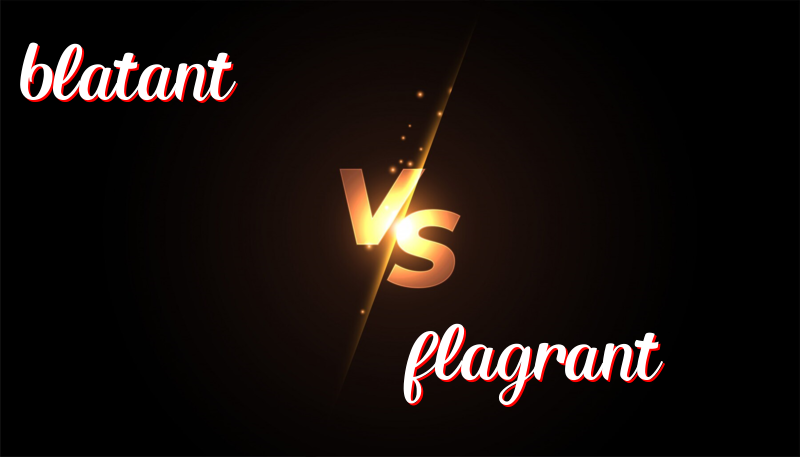Blatant and Flagrant: Understanding the Difference
Blatant vs. Flagrant: Understanding the Difference
Blatant and flagrant are two words that people sometimes mix up. They have different meanings but are used to show something is very bad or obvious.
History of the Words
Blatant: The word “blatant” came into the English language in the 16th century. It describes something that is very loud or done in an open way that most people find bad.
Flagrant: The word “flagrant” also has a long history. It comes from a Latin word meaning “burning.” In English, it means something or someone is noticeably bad and shows no shame.
How to Use Them
Blatant: You use “blatant” when something is noisy or very clear, and it’s done without trying to hide it. It is often used in a negative sense.
- The child made a blatant lie about breaking the vase.
- It was a blatant mistake on the test.
- His phone was blatantly ringing in the quiet library.
- She gave him a blatant look of disapproval.
- The sign was blatantly ignored by the drivers.
Flagrant: “Flagrant” is used when someone does something really wrong and doesn’t care if people know it. It’s very serious.
- It was a flagrant foul in the football game.
- The company’s flagrant pollution harmed the river.
- The thief’s actions were flagrant as he stole in daylight.
- She made a flagrant violation of the rules.
- His attitude was a flagrant display of disrespect.
Trick to Remember the Difference
Blatant: Think of “blatant” as being more about noise and obvious actions that are not hidden.
Flagrant: Remember “flagrant” like a “red flag.” It signals something very bad that everyone sees.
Summary of Usage
Use “blatant” for things that are loud and can’t be ignored in a bad way. Use “flagrant” for actions that are very wrong and openly disrespectful.

Leave a Reply
You must be logged in to post a comment.